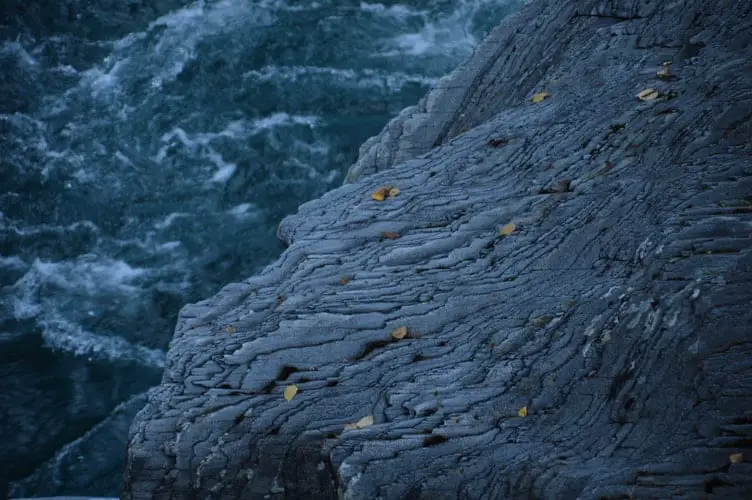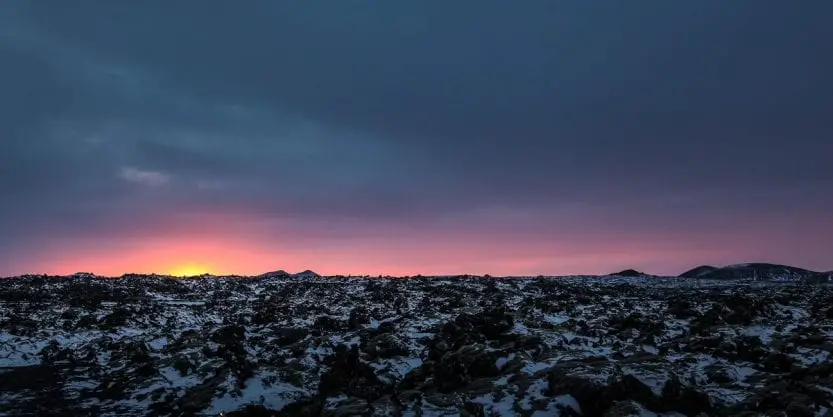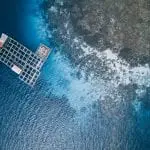The rarity of blue objects in nature is a strange phenomenon in itself. However, what is even stranger is the sighting of blue lava spewing out of a mountain in Java, Indonesia. Located in the bordering lands between the Banyuwangi Regency and the Bondowoso Regency of East Java in Indonesia is a group of composite volcanoes known as the Ijen complex. And this complex has been in the limelight ever since a documentary footage shot by French photographer Olivier Grunewald was released.
The documentary holds two mysteries- one, the surreal blue fire on the Kawah Ijen, and two, the unregulated sulfur mining that goes on in that region. However, given how drawn to blue objects people are, especially an electric blue that looks otherworldly, the Kawah Ijen and its blue fire has become a common search on the internet. The curiosity of global travelers do not end at internet queries. Many travelers have the blue volcano on their bucket list, and in holiday season, the lookout spots can be quite crowded.
If you catch the documentary footage captured by the photography team, you will understand the craze. Eerie and mesmerizing blue flames seem to come together and flow as gracefully as a mountain stream down the deep dark shape of the volcanic mountains. The sight as described by Olivier Grunewald is “strange and extraordinary” and made him and his partner feel as if they were “really living on another planet”.
So, how is it possible for lava to be blue?
The Mystery of the Blue Lava: Solved
The blue objects that resemble lava moving down a mountain face present a great illusion. The lava on Kawah Ijen is red hot, like any other lava elsewhere. Yet, it is blue. However, the blue color is not of the lava itself, but of the sulfuric gases set aflame by the heat of the volcano.
As can be found out from viewing the documentary meant to expose the harsh realities of sulfur mining in the Ijen complex, the region is highly rich in sulfuric gases. Huge quantities of sulfuric gases are released into the atmosphere with each volcanic eruption. When these massive amounts of sulfuric gas tempered under extreme conditions of pressure and heat hit the oxygen in the air, they are ignited. The gases, once ignited, burn with the mystifying blue flame.
The amount of sulfur is so high in these composite volcanoes that they flow down the rock faces and that is really what gives the impression of blue lava on the Kawah Ijen.
The sulfuric gases can be as hot as a thousand degrees Fahrenheit and once aflame, they can continue to burn and glow for a number of days. It is only during the night though that you can satisfy your desire to see these rare blue objects in nature. Unlike other volcanoes where the red-orange lava is visible by daylight as well, the lava on Kawah Ijen can only be viewed under the cover of the dark.
The Paris based photographer spent years observing and documenting the electrifying blue fire at Kawah Ijen and released footage from his experience on the crater for 30 nights straight.
The Beauty and the Horrors of Kawah Ijen, the Mountain that Spills Blue
From afar, Kawah Ijen seems to offer the views of a lifetime. Imagine how attractive the sight of dark mountains surrounded by electric blue fire with a steady slow spill of glowing blue streams can be. To add to that scenery is the Kawah Ijen Crater Lake, which is a stark green color.
However, as with the roses come the thorns, so the Kawah Ijen is not without its dangers.
- The blue flames, which can rise as high as 16 feet, are a result of burning sulfuric gases. The sheer amount of sulfur in the air and the dust on the crater is enough to make you sick if you do not wear protective gear.
- As for the lake, the green is not the color of the water collected there. In fact, the lake contains less water and more hydrochloric acid. So, it is best to forget any thought of taking a dip while watching the spectacular show of glowing blue objects in the dark.
- The documentary released by National Geographic, which brought the Kawah Ijen into global limelight, was created with the intent of bringing to light the condition of sulfur miners. These miners, who can be as young as ten year old, climb up and down the dangerous terrain to collect solidified sulfur rocks. These ores fetch them some money to supplement the low incomes of their families. However, this line of work exposes them to deadly quantities of sulphuric gases that surround the volcanoes for long stretches of time.
Volcanoes have terrified yet fascinated humans for thousands of years and the Kawah Ijen is truly one of a kind. Thus, it is little wonder that tourists want to visit the Ijen complex, given the chance to witness for themselves the wonders of nature.

A Guide to Witnessing the Volcanoes that Glow Blue
Besides Kawah Ijen in East Java, there is one other place on Earth where some semblance to blue lava can be found. In the Danakil Depression, there is the Dallol volcano, which creates a less intense, yet similar sight. The heat of the magma from the eruptions can sometimes cause the sulfur present in the soil to ignite. This leads to sustained blue flames, clearly visible. However, such occurrence is rare and not a sure bet for tourists on the lookout for flaming blue objects.
Therefore, most tourists and travelers on the lookout for blue volcanoes turn to Indonesia and Kawah Ijen. To make a successful sighting, a few things should be kept in mind.
- Take a Midnight Hike: While the burning sulfur is present-day and night, the surreal blue scenery reveals itself only in the darkness. Therefore, it is important to remember to plan your trip accordingly. For the best chance of catching the mountains spill blue, start your trip at midnight or a little ahead. It takes approximately two hours to reach the view point from where the blue flames are most prominently visible. Planning the timing correctly is essential because the flames start to decrease in size with dawn, starting around five in the morning.
- Avoid the Rains: To get to the point from where you can hold the spectacle, you have to climb up Mt. Ijen. And that is best done in a season where the rains are away. Plan your trip between July and September. Between these months, java experiences the dry season. There are two important reasons for visiting when it is dry. Firstly, while the sulfur continues to burn blue even in the rainy season, the flames are lower and milder. Cloud cover can also detract from the spectacular beauty of the bright, vivid blue. The second reason is that the climbing route is quite sandy in many parts with ample rocks. In the rainy season, the path can be quite slippery and treacherous, especially for tourists with no or less climbing experience.
- Get Active: The blue fire at Mt. Ijen is a popular item on the tourists bucket list and there are crowds at the view point almost every night in the holiday season. This fact, however, does not imply that climbing the mountain is easy. It is not extremely difficult, but those who want to behold the blue fire must make the exhausting climb to the top. Being physically active and fit helps. Muscle strengthening exercises and adequate hydration are basic but essential to make the climb less taxing.
- Keep Equipment Handy: No, you do not need additional oxygen support to peak Mt. Ijen. However, you do not a few things for a successful and enjoyable outing to sight the blue volcano. The first and most important of these gears is a flashlight. Since you will be required to climb after night fall, carrying your won flashlight is absolutely essential. It is best to have it as a headgear, mounted on a helmet or secured by a head band. That way you can have your hands free for balance and support. The second most important thing to carry is a mask. Remember, the crater is dusty and sulfur really smells. Other essential equipment include camera, tripod, water bottles, warm clothing and good climbing shoes.
- Avoid the Holiday Crowd: Holidays mean more than usual crowding on Mt. Ijen. Locals, as well as foreigners, can be found atop the mountain to revel in the glorious sight of blue fire running down the slopes. To improve your chances at finding a comfortable spot for yourself and your family or friends, give the holidays a miss and plan the date of your visit with your tour operator carefully. As you experience one of the biggest blue objects in nature in all its glory, do not forget to capture some amazing videos and photos of this rare phenomenon. If a trip is not on your mind, you can still experience the beauty of blue fire at Kawah Ijen by watching the documentary, which popularized this incredible volcano.



